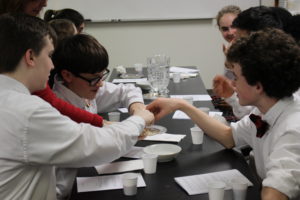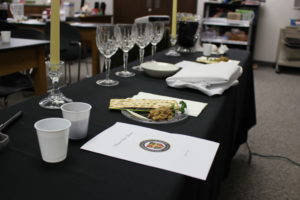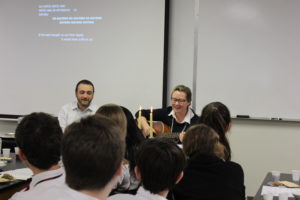Cambridge Passover Seder
Reflection by Dr. Barb Isbell, Professor of Theology
3/31/18
I really enjoyed getting to treat my students (grades 7 and 9) to a Passover Seder, led by Cambridge parents Mr. & Mrs. Pikman. By tasting the bitter, sweet, and salty elements; joining in the ritual blessings; singing Hebrew songs such as “Dayenu” (“We Would Have Been Satisfied”); and asking the traditional four questions, the students learned the history behind and participated in the annual observation of the Passover much as Jesus would have done during the Last Supper.
Mr. Pikman also connected the elements to our Christian faith. He explained the significance of each of the four cups for the Jews (Sanctification, Judgement, Redemption, and Praise) and how each is fulfilled through Christ. Perhaps the most interesting part of the Passover for the students was the Afikomen. In Hebrew tradition, the leader of the Passover places 3 pieces of matzah in the “matzah bag” (one bag with 3 sections/divisions). Later the middle piece is removed, broken, wrapped, and hidden in the room for the children to seek after the eating of the meal. When a child finds the Afikomen, it is brought back out, broken, and shared among all participants. The Trinitarian imagery behind the Afikomen is hard to miss – it is the middle piece that is broken, buried, and “resurrected”, just as the middle person of the Trinity, the Son, was broken and buried for our sins, but was resurrected in the ultimate victory over death. It is this middle piece of matzah that Jesus broke, telling his disciples to take and eat, for “This is my body, which is given for you” (Luke 23:19).
I personally find that my faith is strengthened by such tangible connections between the Exodus from Egypt and our deliverance from sin and death through the sacrifice of our Lord Jesus Christ. I pray that this experience also brought my students to a deeper faith and understanding of our salvation in Christ.


